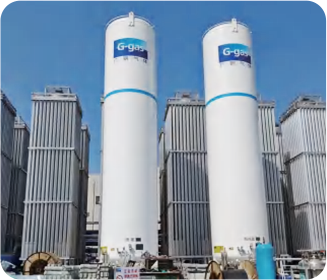close
Choose Your Site
Global
Social Media














In the industrial sector, the application of vaporizers is pivotal for the efficient conversion of cryogenic liquids into gases used across various processes. A Vaporizer serves as a critical component in industries ranging from energy production to chemical manufacturing. This article provides a comprehensive analysis of vaporizers, exploring their functions, types, operational principles, and significant role in industrial applications.
Vaporization refers to the process of converting a substance from its liquid phase into a gaseous phase. In industrial contexts, this process is essential for handling cryogenic liquids such as liquefied natural gas (LNG), liquid nitrogen, oxygen, and other industrial gases. Vaporizers facilitate this phase change, enabling the utilization of these gases in various applications, including fuel combustion, chemical synthesis, and medical therapies.
The use of vaporizers ensures the safe and efficient transition of cryogenic liquids to gases at required temperatures and pressures. This is crucial for maintaining process integrity and safety standards. Vaporizers also contribute to energy efficiency by optimizing the heat exchange process, which can significantly reduce operational costs and environmental impact.
Several types of vaporizers are employed in industry, each designed to meet specific operational requirements and environmental conditions. The most commonly used include ambient air vaporizers and top fan vaporizers.
An Ambient air vaporizer utilizes the natural heat from the surrounding air to vaporize cryogenic liquids. These vaporizers consist of a series of interconnected finned tubes that allow for efficient heat transfer. Ambient air vaporizers are highly cost-effective and environmentally friendly, as they do not require external power sources or fuel combustion for operation.
The top fan vaporizerc enhances the functionality of ambient air vaporizers by incorporating forced air circulation. The addition of fans increases the airflow over the vaporizer surfaces, improving heat transfer rates and allowing for higher vaporization capacities. This type of vaporizer is particularly effective in situations where ambient temperatures are low or when there is a high demand for vaporized gas.
Vaporizers operate based on the principles of heat exchange and phase change thermodynamics. The primary mechanism involves transferring heat to the cryogenic liquid, causing it to absorb enough energy to overcome intermolecular forces and transition into a gaseous state.
The efficiency of a vaporizer hinges on its ability to facilitate effective heat transfer. Ambient air vaporizers rely on natural convection, where warmer air rises and cooler air descends, creating a continuous flow of air over the vaporizer's surfaces. In contrast, top fan vaporizers use forced convection, with fans driving air movement to enhance heat exchange rates.
Vaporizers are integral to numerous industrial processes. In the energy sector, they are used to gasify LNG for power generation or distribution through pipelines. The chemical industry relies on vaporizers to supply gaseous reactants for synthesis processes. In the healthcare field, vaporizers provide medical-grade oxygen and nitrogen, essential for patient care and laboratory operations.
By implementing vaporizers, industries can optimize their gas supply systems. For example, using ambient air vaporizers reduces energy consumption, as they eliminate the need for external heating sources. This approach can lead to substantial cost savings and a reduction in carbon emissions.
A study conducted by the International Gas Union demonstrated that facilities utilizing ambient air vaporizers experienced a 25% decrease in operational costs compared to those using traditional heating methods. Additionally, the adoption of top fan vaporizerc systems in colder climates resulted in a 40% increase in vaporization efficiency, ensuring a consistent gas supply despite low ambient temperatures.
Environmental assessments have shown that vaporizers using ambient heat significantly lower greenhouse gas emissions. By reducing reliance on fossil fuels for heating, facilities can improve their environmental footprint. The implementation of vaporizers aligns with global sustainability goals and regulatory requirements aimed at reducing industrial emissions.

The design and optimization of vaporizers are grounded in thermodynamics and fluid mechanics. Recent advancements focus on enhancing heat transfer coefficients through material innovations and structural design improvements. Computational fluid dynamics (CFD) modeling is employed to simulate vaporizer performance under various operating conditions, guiding the development of more efficient systems.
Advancements in materials such as high-conductivity alloys and coatings have significantly improved vaporizer performance. These materials enhance thermal conductivity and corrosion resistance, extending the lifespan of vaporizers and ensuring consistent operational efficiency.
When selecting a vaporizer, it is crucial to consider the specific requirements of the application, including the type of cryogenic liquid, flow rates, and environmental conditions. Ambient air vaporizers are suitable for operations in moderate climates with lower gas demand, while top fan vaporizerc systems are ideal for high-demand applications or colder environments.
Regular maintenance of vaporizers is essential to prevent operational issues such as ice formation, which can reduce efficiency and pose safety risks. Implementing a maintenance schedule that includes inspection and cleaning will ensure optimal performance. Adherence to safety standards and regulations is also imperative to protect personnel and equipment.
Vaporizers, including ambient air vaporizers and top fan vaporizerc systems, play an indispensable role in industrial operations involving cryogenic liquids. Understanding their functionality and applications allows industry professionals to make informed decisions that enhance efficiency, safety, and environmental compliance.
As industries continue to seek sustainable and cost-effective solutions, the advancement of vaporizer technology remains a critical area of development. Collaboration between engineers, scientists, and manufacturers will drive innovation, leading to the deployment of next-generation vaporizers that meet the evolving demands of global industries.
For further expertise and specialized vaporization solutions, industry stakeholders can consult leading providers such as CryoTriumph, which offers cutting-edge technologies tailored to specific operational needs.